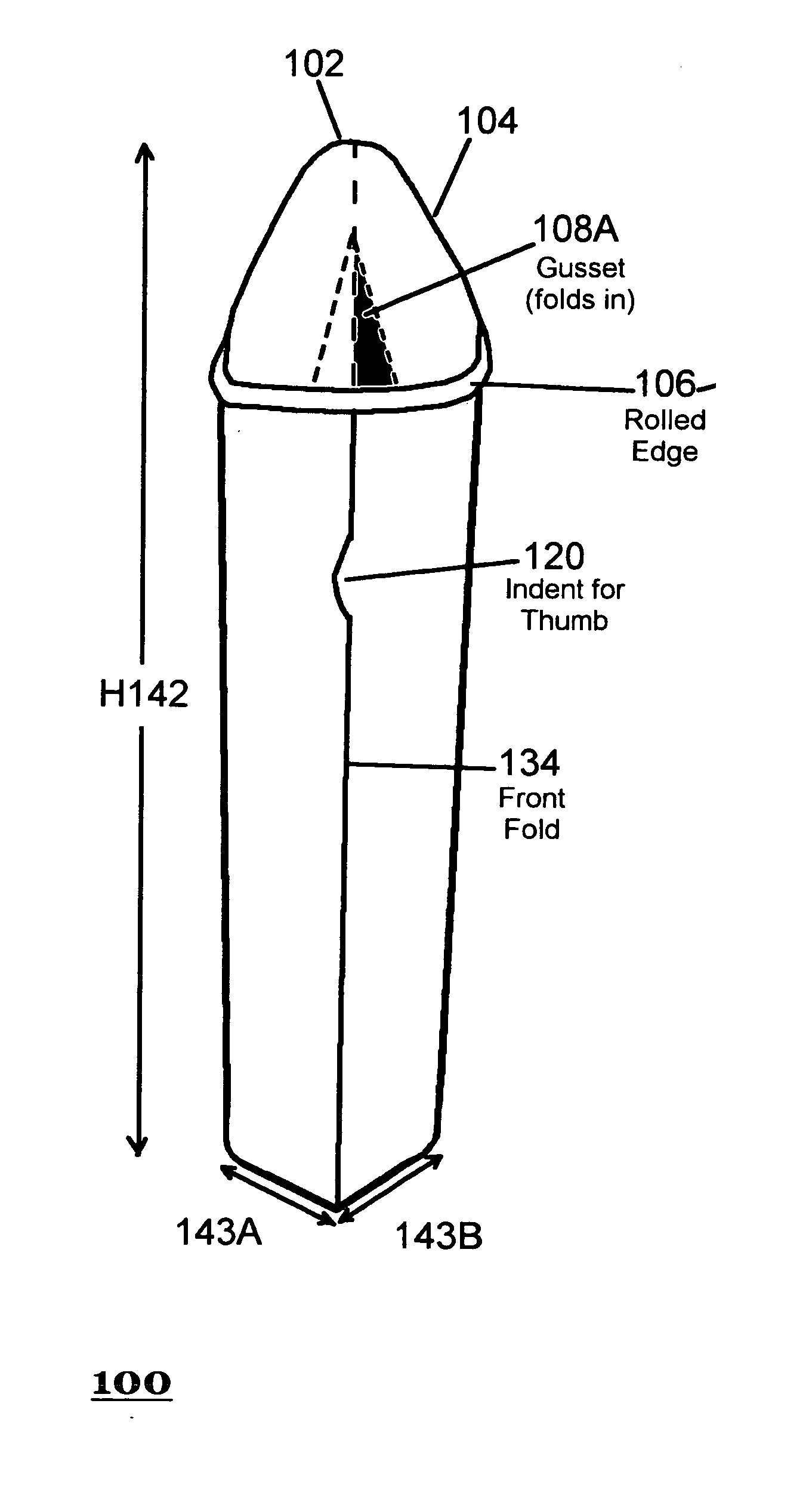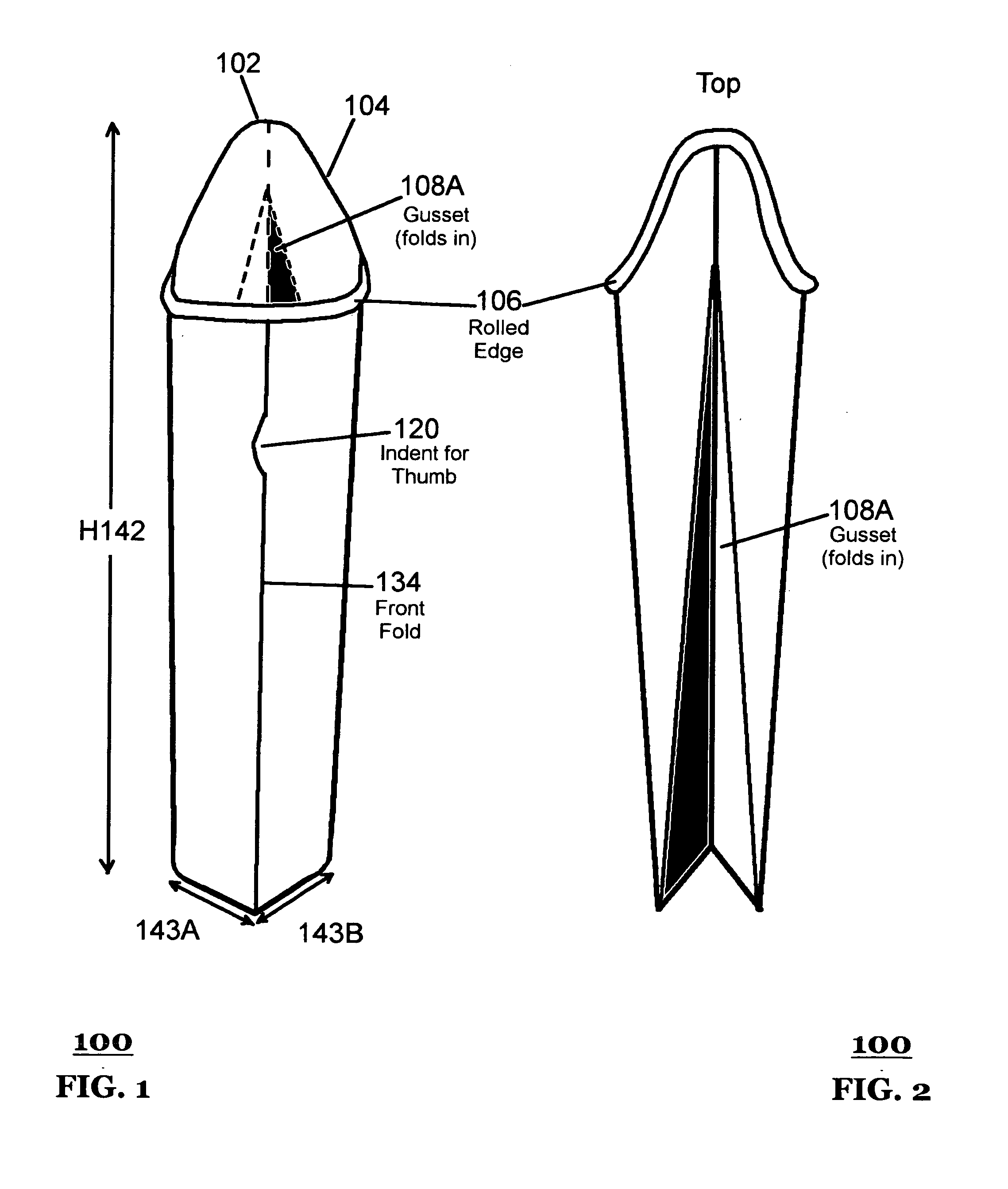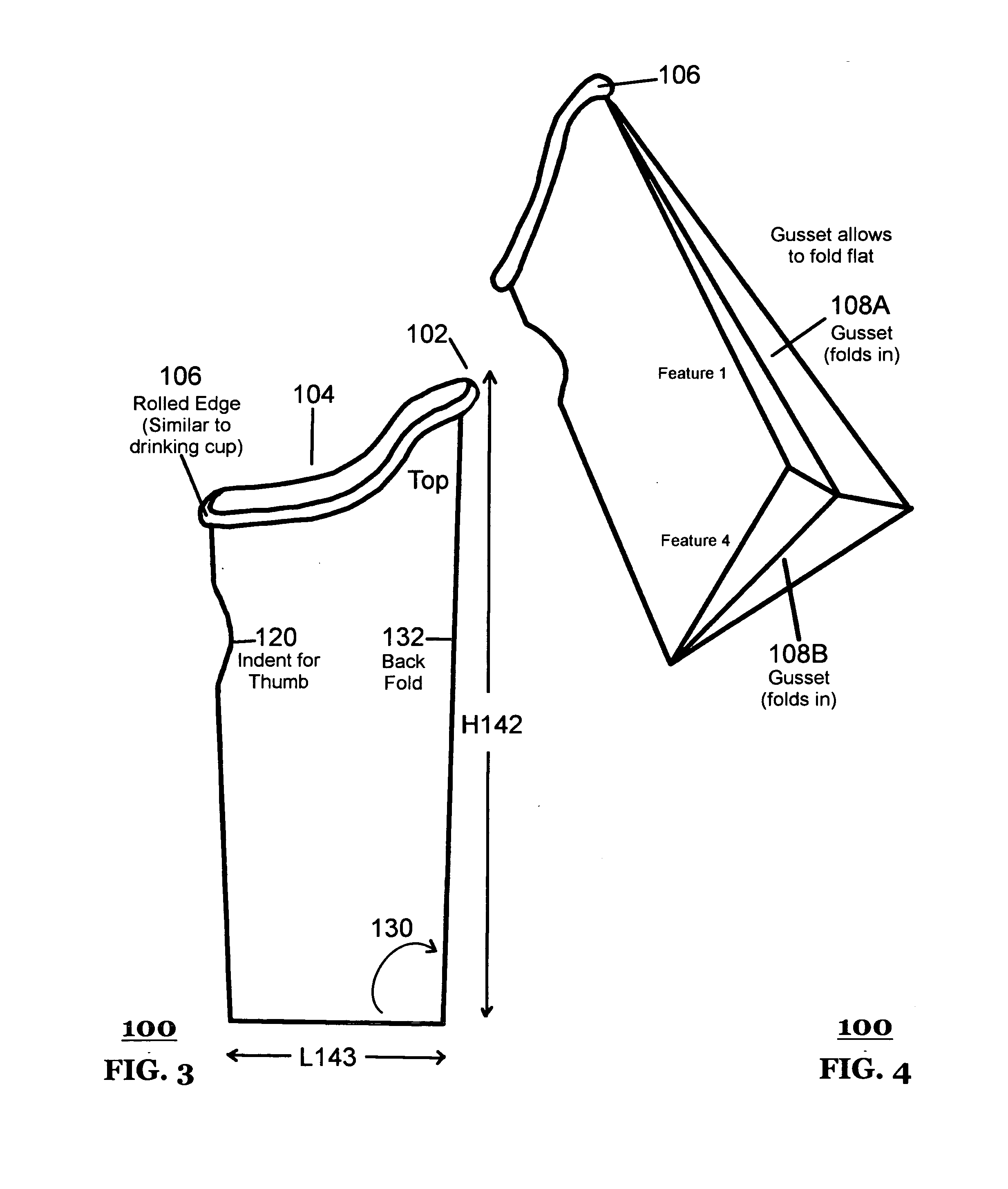Public toilets do not offer clean, sanitary settings for answering the calls of nature.
Splatter, spills and accumulated filth coat the toilet and the walls and floors of bathroom stalls.
These conditions
pose extensive problems for young children particularly, as they lack the balance, dexterity and experience to make use of the facility without touching these soiled areas.
Other products, like toilet seat covers, do not ensure a child or adult will not touch filth and germs in public restrooms and serve no purpose when a proper restroom is unavailable.
Similar prior inventions have been described as an aide in toilet training, a toilet surrogate where none is available and a toilet avoidance measure for times when available toilets and stalls have been rendered unsanitary from improper use or inadequate cleaning.
In fact, this device does not appear to be compactible at all.
Many women carry purses or day bags, but such accessories may not be large enough, or have the available space with regard to other items already being routinely carried, to stow the V-Cup.
Mothers that carry diaper bags for younger siblings not yet potty-trained may have room in these bags, but may nevertheless not appreciate the additional bulk of the rigid V-Cup.
2—The V-Cup's pointed edges on the top slope may cause discomfort when in contact with
skin.
This technique could prove problematic for young girls.
Young children lack the arm reach and dexterity to securely hold the device in place without bending over.
This forward-leaning stance leaves the child balancing precariously and susceptible to sway or fall, resulting in a spill, splash or other messy mishap.
Most young children lack the mental focus,
motor control,
muscle development, coordination and balance to properly perform this task.
Prior inventions possess complex features and / or sophisticated processes that may increase the cost and present a complicated appearance.
These prior inventions may be confusing or intimidating, especially to young children prone to fearing or rejecting unfamiliar objects.
A complicated-looking urinal or toilet may intimidate or unsettle the erratic sensitivities of a young child.
Prior inventions may involve the use of costly and comparatively bulky absorbent granules, gels or liner materials.
These additions in
form and function do not necessarily improve the product because they also include real drawbacks, such as added bulk, extra weight and increased costs of production.
The absorbent materials provide minimal benefit, in that, in the vast majority of cases, the used receptacle may be discreetly emptied, and therefore rendering the absorbency feature irrelevant.
The situations that might arise where someone would be stuck holding a filled receptacle of
urine are so rare as to not justify the added bulk and expense of absorbent materials as a rule.
Prior inventions feature top apertures that do not adjust easily (or at all) in size and / or shape, limiting their versatility and applicability to the broad range of
human anatomy.
Because of this, prior inventions that pop open to a standard / fixed size and form without the ability to easily adjust the top opening wider or narrower can be difficult to use with many children.
Adult women of all shapes and sizes will experience the same configuration
divergence, diminishing the suitability of a standard, non-adjustable device.
Prior inventions present heavier, bulkier alternatives that greatly reduce their portability and stowability.
Some are so bulky and heavy that they would require special accommodations for carrying.
The inability of many of the prior inventions to stow neatly, quickly and unobtrusively in a pants pocket, small purse, or glove box is antithetical to the on-the-go, modern lifestyle.
Even older children can have a difficult time standing completely still.
Even adults are susceptible to this kind of accident, particularly if using the
urine receptacle in transit (e.g.—plane,
train or
bus) where jostling during
urination is likely.
Air turbulence in flight could cause a sudden lurch to the side, where both legs meet in the middle, crushing the receptacle and hurling the fluid out the top.
Prior inventions do have collapsing, folding and stowing features, yet manage to remain still bulky, weighty, and expensive.
They additionally do not lend themselves to a speedy or clean process.
Any device requiring the user to sit, or
squat over a receptacle, held or placed on the floor, could result in
lower body clothing to be lowered nearly to the ankles, where it can then come into contact with dirty floors.
Positioning the body and maintaining a balanced posture over a small surrogate toilet or urinal, while keeping clothes away from dirty surfaces, requires more time and effort than other methods.
Prior inventions offer neither compact size nor disposability, making them burdensome to carry and maintain.
These devices cannot be unobtrusively carried, nor disposed of after use, and must be cleaned before using again.
These labor-intensive methods do not conform with today's fast-paced, on-the-go, modern lifestyle.
Additionally, what
cost savings may be realized by using a non-disposable item over a multitude of disposable ones, may come with greater costs incurred in convenience lost, time lost and additional effort expended to use and maintain.
However, these prior inventions function as funnel-type conduits for
urine, rather than capture / collection devices, and serve no purpose for
solid excrement or vomit.
This shortcoming poses several problems for small females.
First, some toilet-trained young girls remain too short in stature to use a funnel-conduit with a
public toilet because the edge of the toilet stands taller than the outer, lower end of the conduit.
If the user cannot stand slightly above and over the toilet basin edge, proper usage becomes difficult.
Second, even taller children and adults must position themselves very near the filthy toilet, thereby becoming susceptible to inadvertent brushing of hands or forearms against unsanitary surfaces.
Third, in both the aforementioned first and second regards, the user would lower or remove clothing to properly use the device, increasing the
exposure of bare
skin and outer clothes to the unsanitary surfaces.
With young girls, bladder awareness and control may not be
fully developed.
These young girls may have sudden, immediate urges to relieve themselves while lacking the control to wait for a suitable time and place to do so.
This urgency places a tremendous amount of stress on the child, at the same time panicking the parent that seeks to avoid “an accident.” In the times these emergency calls of nature occur in a car, or other locales where
urination can be impossible, uncouth, or dangerous, the conduit device would be of no use without some kind of additional container available to collect the draining urine.
Moreover, women contending with mild incontinence might be at such a distance away that they cannot reach the restroom or suitable ground in time to use the funnel-conduit device.
The costs of disposable items can add up quickly, making affordability an important aspect of disposable urine receptacles; however, it doesn't automatically follow that disposable receptacles should sacrifice minimum levels of performance to achieve affordability.
Foldable, disposable receptacles that appear to be very affordably produced may nevertheless suffer inferior levels of performance in other important areas.
Any prior inventions not meeting these key performance parameters while maintaining affordability may not provide suitable benefit.
 Login to View More
Login to View More  Login to View More
Login to View More 


